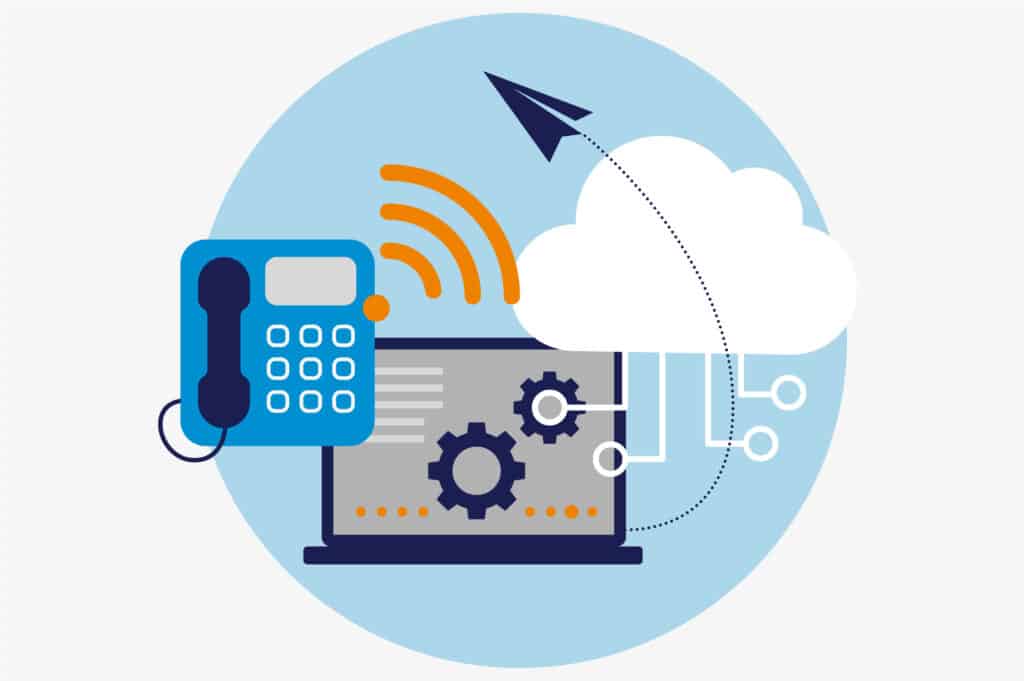The pandemic has been a reality that companies around the world have shared. It required significant changes in how they operate. The status quo of having everyone work in the office no longer makes sense for everyone. Many organisations had to evolve to work through remote means quickly.
During the worst part of the pandemic, it’s estimated that 70% of full-time workers were working from home. The pandemic has hit a new waning phase, but remote work is still a reality. 92% of surveyed employees expect to still work from home at least one or more days per week.
This transformation has forced companies to rethink the tools and policies they use. Many have also needed to revamp how they work entirely. They’ve switched to a cloud-based digital workspace to enable a hybrid team.
This transition has brought newfound benefits, such as:
But, the transition to a digital workplace has also brought challenges and risks. These include:
20% of organisations experienced a breach during the pandemic due to a remote worker.
Overcoming the challenges and reaping the benefits takes time and effort. It also often takes the help of a trained IT professional, so you avoid costly mistakes.
Below are some of the biggest company mistakes when building a digital workplace. We referenced IGLOO’s State of the Digital Workplace report for the statistics.

When companies go virtual for their workflows, files live in a cloud-accessible environment. If those cloud storage environments aren’t well organised, it’s a problem. It can be difficult for employees to find the files they need.
About 51% of employees have avoided sharing a document with a colleague. They either couldn’t find it or thought it would be too hard to find. Notably, this is the highest percentage recorded for this stat in the IGLOO report, which means this problem is worsening.
Some tips for making shared cloud storage files easier to locate are:
No one likes to hear people start talking about something at a meeting and realise they’re lost. They should have noticed an essential piece of an earlier conversation. Many companies haven’t yet overcome in-person vs remote communication challenges.
Nearly 60% of remote workers say they miss out on important information. This is because colleagues first communicated it in person. Efficiency must be improved when in-office workers make decisions without regard for remote colleagues.
Managers and bosses must lead the way in changing this culture. While old habits take a while to change, mindset can transition to be more inclusive of the hybrid world.
Unauthorised cloud app use (also known as Shadow IT) was already a problem before the pandemic. That problem escalated once people began working from home. Which is often using their personal devices.
Over half (57%) of employees use at least one unauthorised app in their workflow. When this happens, organisations can suffer in many ways.
Some of the risks of shadow IT include:
Remote employees aren’t always working from home, connected to their home Wi-Fi. They may also work from airports, hotels, a family member’s home, or local coffee shops.
Companies that don’t correctly protect company data used by remote employees can be at risk of a breach. Public networks are notorious for enabling “man-in-the-middle” attacks. This is where a hacker connects to the same shared network. Then, the software can access data transmissions from others on that network.
It’s advisable to use a business VPN for all remote work situations. VPNs are relatively inexpensive and easy to use. The employee enables the app on their device. The app then reroutes their data through secure, encrypted servers.

Are virtual meetings giving your team problems? As many as 85% of remote workers say they’ve had 1-2 meetings interrupted by technology. It’s getting so you can hardly have a virtual meeting without someone having a technical issue.
Communication is the oil that makes the engine of a digital workplace run. Effective cloud-based video calls, audio calls, and chats depend on the right technology. This facilitates a smooth experience.
Don’t rush to use just any communication tools. Take your time and test them out. Get help optimising settings to improve your virtual meetings. Additionally, ensure your remote team has tools to foster smooth communications. This includes headsets, VoIP desk sets, webcams, etc.
How to Use the New Virtual Appointments in Microsoft Teams
Reach out today to schedule a technology consultation. We can help you improve the efficiency and productivity of your digital workplace.
You need the best IT support in London. Technology is complicated and expensive. It’s so hard to maintain everything and know what to do when something breaks or goes wrong. IT problems can put a damper on your day. They’re frustrating, time-consuming, and seem like a never-ending cycle of issues.
Penntech’s average NPS score over 90 days is 84. The average Net Promoter Score (NPS) for IT Managed Service Providers (MSPs) can vary. Still, an NPS of around 50 is considered excellent in this industry, with scores above 70 exceptional and rare.
We offer our services on a trial basis for the first three months because we’re confident in our delivery and approach.
Penntech offers a wide range of IT services, from strategic project management to 24/7 remote support, ensuring all your IT needs are always covered.
We provide advanced cybersecurity measures and expertise, including penetration testing services and Cyber Essentials, to protect clients from cyber threats.
We offer Clients the ability to scale IT services up or down based on their needs. This flexibility is crucial for businesses that experience seasonal changes or rapid growth.
Other providers often enforce their preferred IT stack, but we don’t, as IT is not a one-size-fits-all solution.
We ensure our Clients’ business continuity through robust disaster recovery and backup solutions.
With experience in various verticals and industries, Penntech understands different businesses’ unique IT challenges and can provide customised solutions..
Contact us today or explore the range of support packages on offer.


Business owners often have to wear many hats, from handling HR and marketing tasks to managing the finances. One task…

Cool Windows 11 Features That May Make You Love This OS
Microsoft released the Windows 11 operating system (OS) over a year ago. It was well-received mainly with reviews as stable…

6 Ways to Prevent Misconfiguration (the Main Cause of Cloud Breaches)
Misconfiguration of cloud solutions is often overlooked when companies plan cybersecurity strategies. Cloud apps are typically quick and easy to…

4 Proven Ways to Mitigate the Costs of a Data Breach
No business wants to suffer a data breach, but unfortunately, it’s difficult to avoid them in today’s environment. Approximately 83%…

The benefits of AI include advancing our technology, improving business operations, and much more. Adoption of AI has more than doubled…

Leading Password Managers for Personal and Business
We hope that your business is already considering a password manager system, but there’s still the matter of finding the…

What’s Changing in the Cybersecurity Insurance Market?
Cybersecurity insurance is still a pretty new concept for many SMBs. It was initially introduced in the 1990s to provide coverage for large enterprises. It covered things like data processing errors and online media.

What are the advantages of implementing Conditional Access?
It seems that nearly as long as passwords have been around, they’ve been a major source of security concern. Eighty-one…

Skills Every Cybersecurity Professional Needs in 2024
As we accelerate into 2024, the cybersecurity landscape is evolving at an unprecedented pace, demanding fresh skills from professionals in…

Skills Every IT Manager Must Master to Thrive in 2024
In the rapidly evolving landscape of technology, the role of an IT manager is more critical than ever. As we…

Why Every Business Needs a Cybersecurity Consultant
In today’s digital landscape, where online threats lurk around every corner, the importance of robust cybersecurity cannot be overstated. As…

The Ultimate Guide to Full-Service IT Management
In today’s fast-paced digital landscape, harnessing the full potential of your business means embracing the power of technology. “Unlocking Business…

Network Penetration Testing for Businesses
In an era where digital threats loom large, businesses must proactively safeguard their assets. Network penetration testing emerges as a…

Cybersecurity Providers You Can Trust
In today’s digital landscape, where data breaches and cyber threats are alarmingly frequent, selecting a trustworthy cybersecurity provider has become…

Cybersecurity Review 2023: Top Threats and Trends
As we delve into 2023, the cybersecurity landscape has never been more dynamic and crucial to our digital lives. From…

Essential Cybersecurity Tips to Safeguard Your Digital
In today’s hyper-connected world, protecting your digital life is more crucial than ever. With cyber threats lurking around every corner,…

Cybersecurity Guidelines: Must-Know Tips!
In an increasingly digital world, protecting your online presence is more critical than ever. Cybersecurity breaches are no longer just…